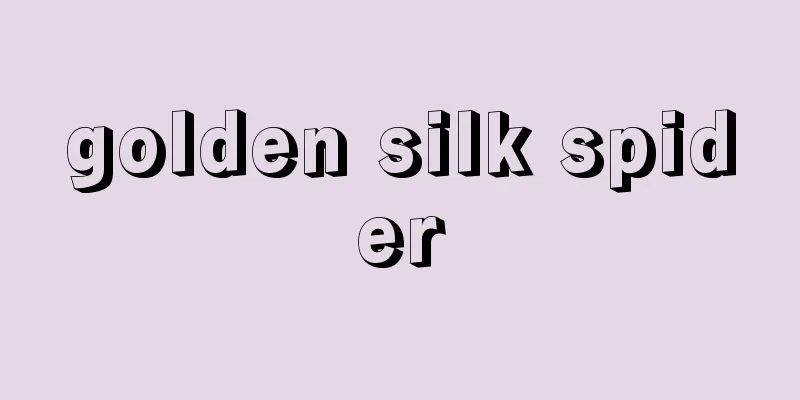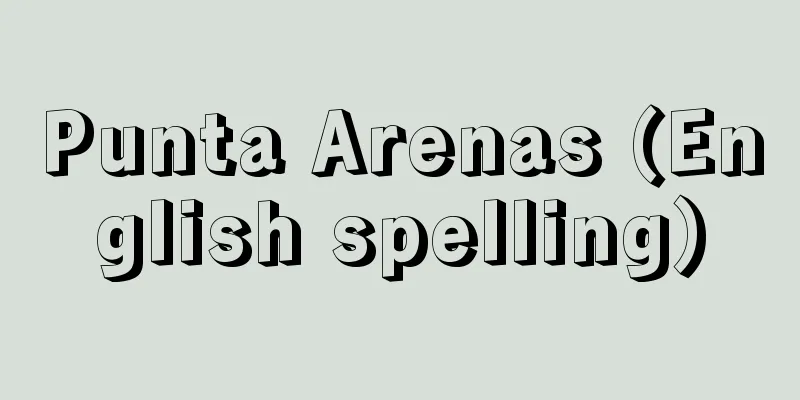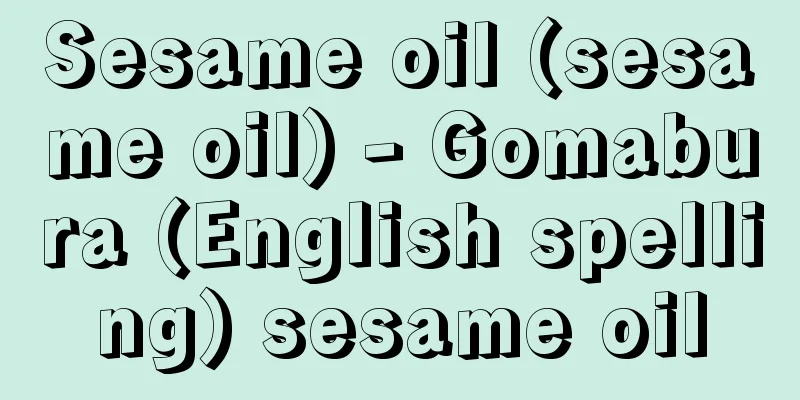Photographic film - shashinfirumu (English spelling)

|
A type of photosensitive material, it is a transparent thin film support on which a layer of photographic emulsion is applied, and the developed image can be observed by transmitted light. In instant photography, the photosensitive material containing the developing agent is called film. Celluloid was once used as the support, but triacetate or polyester is now used. There are also negative types, which are intended to be printed and used to make photographs, and positive types (reversal types, inversion types) for directly making slides, etc. The former are developed to produce the opposite light and dark of the subject, while the latter are developed to produce the same light and dark as the subject. Other classifications include black and white film (monochrome film) and color film, and sheet film as opposed to roll film. Roll film is a film with multiple frames wound on a single core, and comes in a variety of sizes, including 35 mm size with 35 mm width and holes spaced equally on both sides, 24 mm wide APS size, and 61.5 mm wide Brownie size. Sheet film is an alternative to the old glass-based dry plates, but it is made up of individual sheets of film, each containing one frame. Today, it is mainly used in large cameras, such as 4 inches x 5 inches and 5 inches x 7 inches. [Poetry by Ito] Black and White FilmThis is a film used to make negatives for printing black-and-white photographs, and most are black-and-white negative type. [Poetry by Ito] structureOn the base film, a subbing agent to improve the adhesion between the emulsion and the base, a photosensitive emulsion, and gelatin to protect the emulsion are applied in that order, and the back side is usually coated with gelatin mixed with a dye to remove the curling of the film and improve flatness, and to prevent halation (diffuse reflection from the back side of the film). Many general-purpose films have a multilayer structure with two photosensitive emulsion layers, with a low-sensitivity emulsion on the bottom and a high-sensitivity emulsion on the top, to improve performance, but there are also special structures such as X-ray film, which has a thick emulsion coating on both sides of the base. [Poetry by Ito] ApplicationsMany different types of film are produced, with the film structure and emulsion properties designed to best suit each application, and are used for a wide range of purposes, including ultraviolet, general photography, copying, plate making, infrared, radiation, and astronomy. [Poetry by Ito] General propertiesFilm has various characteristics such as sensitivity, light sensitivity (color sensitivity), contrast, and other properties, which are combined to give it characteristics suitable for various purposes. The degree of exposure is called sensitivity, and films for general photography are indicated by ISO (iso) sensitivity. The higher the sensitivity number, the smaller the aperture and the faster the shutter speed can be used. The sensitivity of an emulsion to light of a certain wavelength is called its photosensitivity or color sensitivity. Silver halide is naturally sensitive from ultraviolet to blue light, and even the best silver iodobromide is only sensitive to light of about 350 to 520 nanometers (blue light). By adding a substance called a photosensitive dye to this color-blind silver halide, it becomes sensitive to longer wavelengths of light, i.e., green or red light, and depending on the type of photosensitive dye, an emulsion can be made that is sensitive to infrared light. Films that are sensitive to infrared light are specifically called infrared films. Most films used for general photography are panchromatic (abbreviated as panchromatic), which has the property of being sensitive to the entire visible light range up to red light, but those that are sensitive to green light are called orthotypes, and those that are only sensitive to blue light and ultraviolet light are called regular types. The degree of contrast between light and dark in an image is called contrast, and in general photography, contrast is reproduced as seen by the naked eye, but it can be changed to some extent by changing the length of the development time. Films that have this property particularly enhanced include microfilm for copying and film for plate making. The ability to capture fine details is called resolution, and is expressed as the reciprocal of the smallest width (in millimeters) of a pair of evenly spaced black and white stripes that can be distinguished. The higher the resolution, the greater the resolution. Generally, higher speed films have lower resolution. The permissible range of exposure that can reproduce a subject with the same appearance is called latitude. Films with a wider latitude have a wider tolerance for underexposure and are easier to use, but generally films with higher contrast have a smaller latitude. Films for subjects with a very large contrast ratio, such as spectrophotography and astronomy, require a particularly wide latitude, so extended range films, which are made of three layers of three types of emulsion, are used. The density of the silver particles that make up the negative is called granularity. Generally, lower speed films have smaller silver particles and therefore better granularity. [Poetry by Ito] How to use film effectivelyUsing film well means making the most of its performance. The basic principle is to use a medium-sensitivity film of around ISO 100 for general shooting of people and landscapes outdoors, a low-sensitivity film of around ISO 40 with high resolution and good graininess if you intend to enlarge the image to a large size, and a high-sensitivity film of ISO 400 or above for shooting indoors or other places with insufficient light or when a high-speed shutter is required for sports. The next key to producing good negatives is to set the sensitivity of the camera and light meter correctly, provide the appropriate exposure, and perform optimal development. [Poetry by Ito] Color filmThere are two types of film for making color photographs: color reversal film for making positive color film for slides and printed manuscripts, and color negative film (commonly called negative color film) for making color negatives for prints. Both are multi-layered emulsions with up to 12 layers, including three types of emulsion layers that develop colors in cyan, magenta, and yellow, filter layers, as well as protective and undercoat layers, on a single sheet of film to produce color using the three primary colors of the subtractive color method. The general properties are almost the same as black-and-white film, but all films are sensitive to the entire visible light range. However, depending on the difference in sensitivity, they are classified into daylight and tungsten light, and the shooting light source is specified. However, some negative color films are classified into short-term use (mainly for daylight) and long-term use (mainly for tungsten light) depending on the exposure time. 35mm negative color films are called universal type, and can be used under both daylight and tungsten light. In addition, most films are internal type films in which the coupler (color former) is contained in the emulsion itself, but there are rare cases of external type films in which the coupler is in the developer. The basic usage is the same as for black and white film, but as mentioned above, the film must be selected according to the light source and exposure time. When shooting color negatives, you can make photos with good color by shooting a color reversal film at the same time and printing the slide as a color sample. Color film is made by modifying one layer of the emulsion of a color film to be sensitive to infrared light and record images captured by infrared light as color images. It is used for remote surveys of plant distribution, etc. [Poetry by Ito] "The World History of Film and Cameras: Technological Innovation and Business" by Rees V. Jenkins, translated by Tetsuro Nakaoka (1998, Heibonsha) [Reference items] | | | | | | | |Source: Shogakukan Encyclopedia Nipponica About Encyclopedia Nipponica Information | Legend |
|
写真感光材料の一種で、透明な薄い膜状のもの(フィルム)を支持体として、その上に写真乳剤層を塗り、現像された画像を透過光で観察しうる構造のものをいう。インスタント写真では現像材を含む感光材料のことをフィルムとよんでいる。支持体には一時セルロイドを使用した時代もあったが、現在はトリアセテートやポリエステルが使用されている。またプリントして写真をつくることを目的とするネガタイプと、直接スライドなどをつくるポジタイプ(リバーサルタイプ、反転タイプ)があり、前者は現像によって被写体と逆の明暗が得られるもの、後者は被写体と同じ明暗になるものをいう。そのほか黒白フィルム(モノクロームフィルム)とカラーフィルム、ロールフィルムに対するシートフィルムなどに分類される。ロールフィルムは複数こま分のフィルムが1本の芯(しん)に巻いてあるものをいい、35ミリメートル幅で両側に等間隔の穴をもつ35ミリサイズ、24ミリメートル幅のAPSサイズ、61.5ミリメートル幅のブローニーサイズなどがある。シートフィルムは昔のガラスを支持体とする乾板にかわるものであるが、1こま分を1枚ずつシート状のフィルムにしたもので、現在は主として4インチ×5インチ、5インチ×7インチなど大型サイズのカメラに用いられている。 [伊藤詩唱] 黒白フィルム黒白写真をプリントするための原板(ネガ)をつくるフィルムで、ほとんどは黒白ネガタイプである。 [伊藤詩唱] 構造ベースとなるフィルム上に、乳剤とベースの接着性をよくするための下引(したびき)剤、感光乳剤、乳剤を保護するゼラチンの順に塗布し、裏面には、フィルムの巻きぐせ(カーリング)をとり平面性をよくするためと、ハレーション(フィルム裏面からの乱反射)を防止するために、色素を混ぜたゼラチンを塗ってあるのが普通である。一般用のフィルムでは、性能をよくするため感光乳剤層を2層にし、下側に低感度乳剤、上側に高感度乳剤を塗布した重層構造を採用しているものが多いが、ベースの両面に厚く乳剤を塗布したX線用フィルムなど特殊な構造となっているものもある。 [伊藤詩唱] 用途フィルムの構造や、乳剤そのものの性質を、それぞれの用途にもっとも適するように設計した多種類のフィルムがつくられ、広範な用途に供されている。紫外線用、一般写真用、複写用、製版用、赤外線用、放射線用、天文写真用などがある。 [伊藤詩唱] 一般的性質フィルムには感度、感光性(感色性)、コントラストその他の性質があり、これらを組み合わせて用途に適した特色をもたせている。どのくらい露光すればよいかを示す度合いを感度といい、一般撮影用フィルムはISO(イソ)感度で表示されている。感度は数値の大きいほうが高く、より小さい絞りとより速いシャッター速度を使用して撮影することができる。 乳剤がどんな波長の光に対してどのような感じ方をするかということを感光性または感色性とよぶ。ハロゲン化銀本来の感光性は紫外部から青色光までで、最良のヨウ臭化銀でも約350ナノメートルから約520ナノメートル(青色光)までである。この色盲のハロゲン化銀に感光色素と称する物質を添加すると、より長波長の光、すなわち緑色光や赤色光に感ずるようになり、感光色素の種類によっては赤外線に感光する乳剤をつくることができる。この赤外線に感光性をもつフィルムをとくに赤外フィルムとよぶ。一般撮影用フィルムのほとんどは、赤色光までの可視光全域に感光する性質をもつパンクロマチック(略してパンクロ)とよばれるタイプであるが、緑色光まで感じるものをオルソタイプ、青色光や紫外線にしか感光性をもたないものをレギュラータイプと称する。 画像の明暗の対比の度合いをコントラストといい、一般撮影用では、肉眼で見たとおりのコントラストに再現されるようにつくられているが、現像時間の長短によってある程度変化させることができる。とくにこの性質を強めたフィルムに、複写用のマイクロフィルムや製版用フィルムなどがある。 どのくらい細かいものを写す能力があるかということを解像力といい、等間隔な黒白の条線のうち、見分け可能な黒白の1対の最小幅(ミリメートル)の逆数で表され、数値の大きいほうが能力が大きいことを示す。一般的には高感度のフィルムのほうが能力が小さい。 被写体を同じ感じに再現できる露光の許容される範囲をラチチュードという。この性質の広いフィルムのほうが、露光の過不足に対する許容範囲が広く使いやすいが、一般にコントラストの高いもののほうがこの性質が小さい。分光写真や天文写真など明暗比の非常に大きい被写体用のフィルムは、とくにこの性質の広いものが要求されるので、3種の乳剤を3層に塗布したエクステンデッド・レンジ・フィルムとよばれるものが使用されている。 ネガを構成する銀粒子の疎密の感じを粒(りゅう)状という。一般に、より低感度フィルムのほうが銀粒子が小さいので粒状性も良好である。 [伊藤詩唱] フィルムの上手な使用法フィルムを上手に使うということは、その性能を十分に生かすことである。その基本は、戸外の人物や風景など一般的な撮影にはISO100ぐらいの中感度フィルム、大きなサイズに引き伸ばすことを前提とする場合は、解像力が高く粒状性のよいISO40前後の低感度フィルム、室内など光量が十分でない所やスポーツなど高速シャッターを必要とするときは、ISO400以上の高感度フィルムを選択するのが第一条件である。次にカメラや露出計の感度を正しくセットし、適切な露光を与え、最適な現像をすることが、よいネガをつくるこつである。 [伊藤詩唱] カラーフィルムカラー写真をつくるためのフィルムで、スライドや印刷原稿のもととなるポジカラーフィルム用のカラーリバーサルフィルムと、プリント用のカラーネガをつくるカラーネガチブフィルム(一般には、ネガカラーフィルム)とがある。いずれも減色法の三原色によって発色させるために、1枚のフィルムの上に、シアン、マゼンタ、イエローに発色する3種の乳剤層およびフィルター層、ならびに保護層や下引層などをもつ12層にも及ぶ多層乳剤である。一般的性質は、黒白フィルムとほぼ同じであるが、感光性だけはすべてのフィルムが可視光全域に感じる。しかしその感じ方の違いによって、デーライト用とタングステン光用とに分類され、撮影光源が指定されている。しかしネガカラーフィルムのなかには、露光時間によって短時間用(主としてデーライト用)、長時間用(主としてタングステン光用)とに分けられているものもある。35ミリのネガカラーフィルムはユニバーサルタイプとよばれ、デーライト光にもタングステン光にも使用できる。そのほか、ほとんどのフィルムがカプラー(発色剤)を乳剤自身のなかにもつ内(うち)型フィルムであるが、まれにカプラーが現像液中にある外(そと)型フィルムもある。 使い方の基本は黒白フィルムと同じであるが、前述のように光源や露光時間によりフィルムを選択しなければならない。なおネガカラーを撮影するときは、カラーリバーサルフィルムを同時に写しておき、このスライドを色見本としてプリントすると、色彩のよい写真をつくることができる。 カラーフィルムの乳剤の1層を赤外光に感ずるように変更し、赤外光による像を色画像として記録させるようにしたものを赤外カラーフィルムといい、植物分布の遠隔調査などに使用されている。 [伊藤詩唱] 『リーズ・V・ジェンキンズ著、中岡哲郎訳『フィルムとカメラの世界史――技術革新と企業』(1998・平凡社)』 [参照項目] | | | | | | | |出典 小学館 日本大百科全書(ニッポニカ)日本大百科全書(ニッポニカ)について 情報 | 凡例 |
>>: Photographic emulsion - Shashin Nyuuzai
Recommend
Valuation profit, valuation loss
This refers to the difference between the book val...
Right to request appraisal of shares
In cases of mergers, business transfers, changes t...
Isogai [Hot Spring] - Isogai
...Even today, about 60% of the working populatio...
Woven hat - Amigasa
A hat made by weaving stalks of rush grass, rice ...
Osmia
…Among the megacutter bees, species of the Chalic...
Shenzhen
A sub-provincial city (a prefecture-level city wi...
Foam fire extinguisher
Most of them are tip-over type. It is a double-bot...
Dry steam
...All of what we call steam, clouds, fog, mist, ...
Dracaena fragrans (English spelling) Dracaenafragrans
… [Takabayashi Masatoshi]. … *Some of the termino...
Zhavoronok
...The period between Christmas and Epiphany, cal...
Quail - quail
〘Noun〙① A bird of the Phasianidae family. Total le...
Kusakabe Kukou
...A patriot during the late Edo period. His give...
Aponogeton distachyon (English spelling) Aponogetondistachyon
… [Takashi Yamashita]. … *Some of the terminology...
Number - Bante
[1] 〘 noun 〙① A warrior who is stationed at a cast...
Indium alum - Indium alum
...Solubility in 100 g of water: 2.62 g (0°C), 6....









